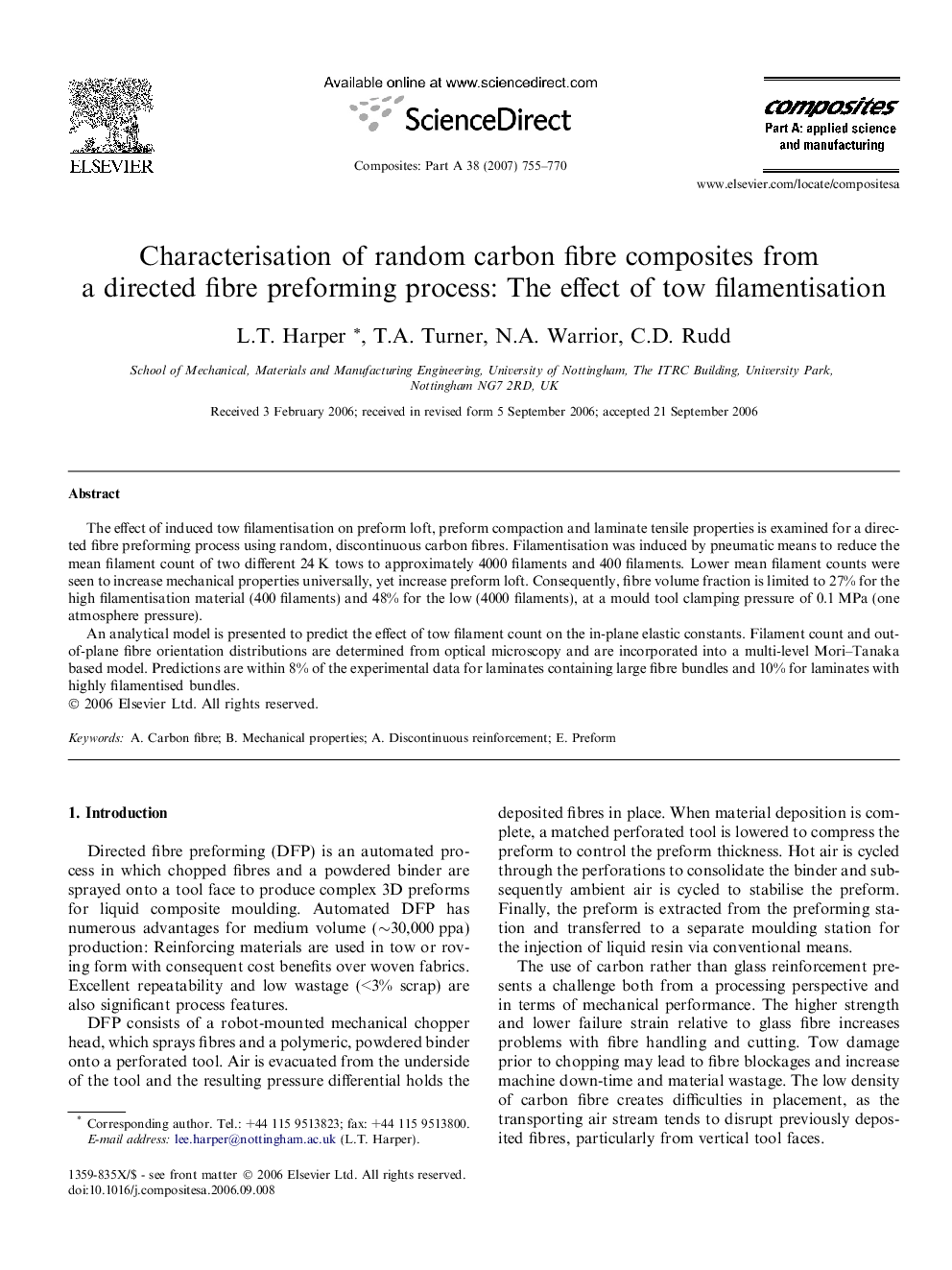| Article ID | Journal | Published Year | Pages | File Type |
|---|---|---|---|---|
| 1467861 | Composites Part A: Applied Science and Manufacturing | 2007 | 16 Pages |
The effect of induced tow filamentisation on preform loft, preform compaction and laminate tensile properties is examined for a directed fibre preforming process using random, discontinuous carbon fibres. Filamentisation was induced by pneumatic means to reduce the mean filament count of two different 24 K tows to approximately 4000 filaments and 400 filaments. Lower mean filament counts were seen to increase mechanical properties universally, yet increase preform loft. Consequently, fibre volume fraction is limited to 27% for the high filamentisation material (400 filaments) and 48% for the low (4000 filaments), at a mould tool clamping pressure of 0.1 MPa (one atmosphere pressure).An analytical model is presented to predict the effect of tow filament count on the in-plane elastic constants. Filament count and out-of-plane fibre orientation distributions are determined from optical microscopy and are incorporated into a multi-level Mori–Tanaka based model. Predictions are within 8% of the experimental data for laminates containing large fibre bundles and 10% for laminates with highly filamentised bundles.
